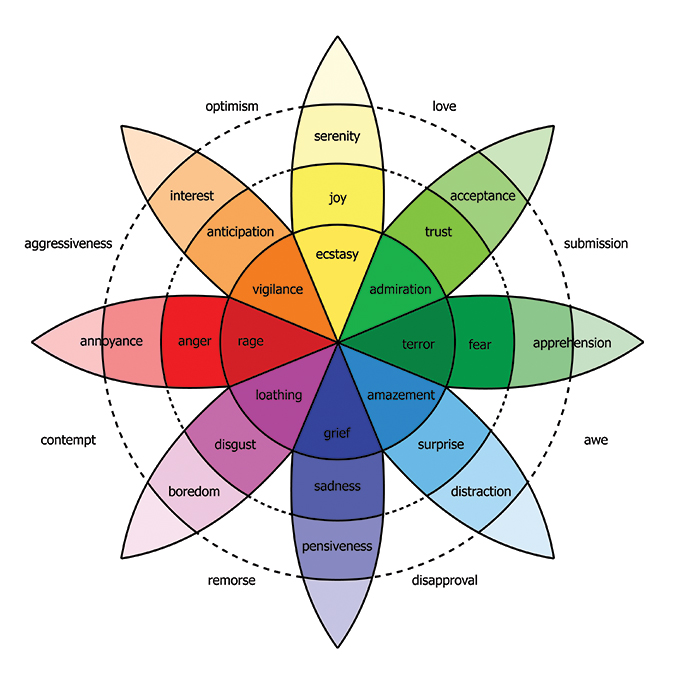Leadership with a focus on wellness
Marie Curie once said: “Nothing in life is to be feared, it is only to be understood. Now is the time to understand more, so that we may fear less.”
Leaders often portray themselves as confident and fearless, but as leaders we are often the opposite. Confused leaders, misunderstood leaders, overwhelmed leaders and sometimes even scared leaders is more like it.
Whether as a graduate student mentoring an undergrad in the lab, a faculty member overseeing a research team or a department chair leading a group of faculty, we all question our leadership ability and are unsure of ourselves at times. Therefore, we need to reflect on our own leadership styles to better understand the critical role they play in our health and well-being as well as the health and well-being of those we lead.
As scientists, we often are influenced first by the leadership styles we see in graduate school. We see how our laboratory adviser reacts to successes and failures in research, and we begin to adapt to these reactions. Over time, we become conditioned to react one way when our adviser congratulates us on successfully completing our qualifying exam and another when this same adviser scolds us about a failed or incorrectly controlled experiment.
As leaders in the sciences, we have plenty of room to improve how we lead; in particular, scientific leaders should work to put more focus on ensuring that wellness is considered as a key variable in the success of their trainees. We suggest that scientists take advantage of what is known about leadership both from the academic sector and the business world and work to be transformational leaders.
Transformational leadership
Transformational leaders are dedicated to incorporating the ideas and taking into account the needs of all members of their organization, working to build a team that can achieve its goals efficiently and effectively.
We all know that being a good leader is not about wearing a tie, having a title or giving instructions. A leader should embrace transformational leadership, support the needs of the team and incorporate new ideas to ensure the team’s needs are being met.
Transformational leaders work to reduce fear in their teams through increasing understanding. As we know from the fundamentals of neuroscience, experiencing fear hinders our ability to think critically and make rational choices. To ensure that the team can function at its fullest potential, we must determine our team members’ needs. For example, as a mentor in the lab, we should determine a new student’s knowledge level before assigning tasks. This often requires asking more than yes-or-no questions.
Q1: Have you used a pipette before?
A1: Yes.
Q2: Can you tell me about your experiences doing so?
If, in the scenario above, the mentor stopped with the “yes” response, they might assign a task beyond the scope of the student’s ability rather than listening to the student and understanding their needs and concerns. The answer to the second question is very telling.
A2: I have used a pipette in my introduction to biology course, but my professor said that I needed more practice. This answer shows a clear need for additional training to ensure that the student is confident and capable. As leaders, we need to make sure to set our teams up for success; sometimes that means taking a step backward to ensure that everyone is trained and prepared.
Emotional intelligence
Another way to ensure that we are working to understand the needs of our team members is to engage our own emotional intelligence. This EI is essential for managing our own emotions and for ensuring that we are aware of the emotions within our team.
The EI of their leaders is what motivates 87 percent of millennials to help their employers succeed, according to a 2017 survey by the Lenovo Institute. EI is defined in three ways:
1. Notice, label and define what YOU are feeling.
2. Notice, label and define what OTHERS are feeling.
3. Use this information to GUIDE your thinking and behavior.
Mastery of EI will help us understand not only our own emotions but also the emotions of our teams so that we can respond effectively. We all have known leaders with varying degrees of EI and can reflect on how that made us feel. To promote the well-being of a team, leaders should work to understand the impact that actions and words have on them as well as how to communicate effectively about emotions.
The ABC model
To understand the impact of our actions on our own emotions and those of others, we can use the ABC model. This model is designed to help us understand the interactions among thoughts, emotions and behaviors.
Think about the last time you did not handle your emotions well. Now go through the steps below. You should have a new way of looking at the initial event that allows you, in the future, to react in a more emotionally intelligent way.
A: Activating event — Something happens to you or within the environment around you. Example: “Someone turned off my experiment while I was away.”
B: Beliefs — You have a belief or interpretation regarding the activating event. Example: “They are trying to ruin my results.”
C: Consequences — Your belief has consequences that include feelings and behaviors. Example: “I believe they are out to get me.”
D: Disputations of beliefs — Challenge your beliefs to create new consequences. Example: “Maybe they just made a mistake.”
E: Effective new beliefs — Adoption and implementation of new adaptive beliefs. Example: “I will turn it back on and assume the best until I have a definite reason to believe otherwise. I will talk to them and ask that they be more cautious next time.”
By regularly using the ABC model, we can train our behaviors and work to align better with those of a transformational leader. The ABC model is also a great tool for discussing tough situations and reactions with a team to ensure that we are building strong communication.
Wheel of emotions
A leader needs a robust and nuanced emotional vocabulary to communicate effectively and to promote open communication of emotions by team members.
Plutchik’s wheel of emotions identifies eight basic emotions and combinations of those basic emotions within a colored wheel. This can help promote the effective and clear communication of emotions, which is called emotional literacy.
When leading a team that struggles with emotional literacy, consider using this wheel to guide the conversation and ensure accurate perception of each person’s emotions. For example, a leader might perceive that a team member is showing rage after being asked why they were late for a meeting, but in reality that team member is simply annoyed by the traffic that made them late.  This colorful wheel, designed in 1980 by Robert Plutchik, a psychologist, identifies eight basic emotions and their combinations.
This colorful wheel, designed in 1980 by Robert Plutchik, a psychologist, identifies eight basic emotions and their combinations.
Be a role model
A leader should be a role model in their organization, laboratory or department. A good leader should, therefore, be aware of the need for wellness in the organization and work to embrace wellness programs that promote the well-being of the team. As leaders, we should educate ourselves and our team members about EI and emotional literacy.
We can cultivate EI in our teams by encouraging emotional responsibility through promoting team service projects. A leader who wishes to promote EI also should aim to create an honest work environment where transparency is held in the highest regard. Most importantly, we must lead by example and develop our personal EI as leaders.
Conclusion
As scientists, we focus on collecting data, publications and grants, hoping that one day we will accumulate enough to be rewarded in our work lives, and only then will we allow ourselves to start enjoying life. With this mindset, we can find ourselves dedicating most of our time to work and neglecting our wellness.
As researchers, we spend most of our time in the laboratory or our offices, so it is imperative that faculty, academic leaders and mentors embrace the importance of wellness both in themselves and in their team members. We must model positive EI and wellness for those we lead to promote a culture that embraces leading through wellness.
Enjoy reading ASBMB Today?
Become a member to receive the print edition monthly and the digital edition weekly.
Learn moreGet the latest from ASBMB Today
Enter your email address, and we’ll send you a weekly email with recent articles, interviews and more.
Latest in Opinions
Opinions highlights or most popular articles

A paleolithic peer review
You might think review panels have only been around for the last century or so. You would be mistaken.

Early COVID-19 research is riddled with poor methods and low-quality results
The pandemic worsened, but didn’t create, this problem for science.

So, you went to a conference. Now what?
Once you return to normal lab life, how can you make use of everything you learned?

My guitar companion
A scientist takes a musical journey through time and around the world.

Catalyzing change and redefining purpose
To mark Women’s History Month, Sudha Sharma writes about her journey from focusing on her own research program to being part of a collaborative COVID-19 project.

The power of sabbaticals
To mark Women’s History Month, Nicholas Rhind writes about learning techniques in other researchers’ labs that empower the work in his own.


